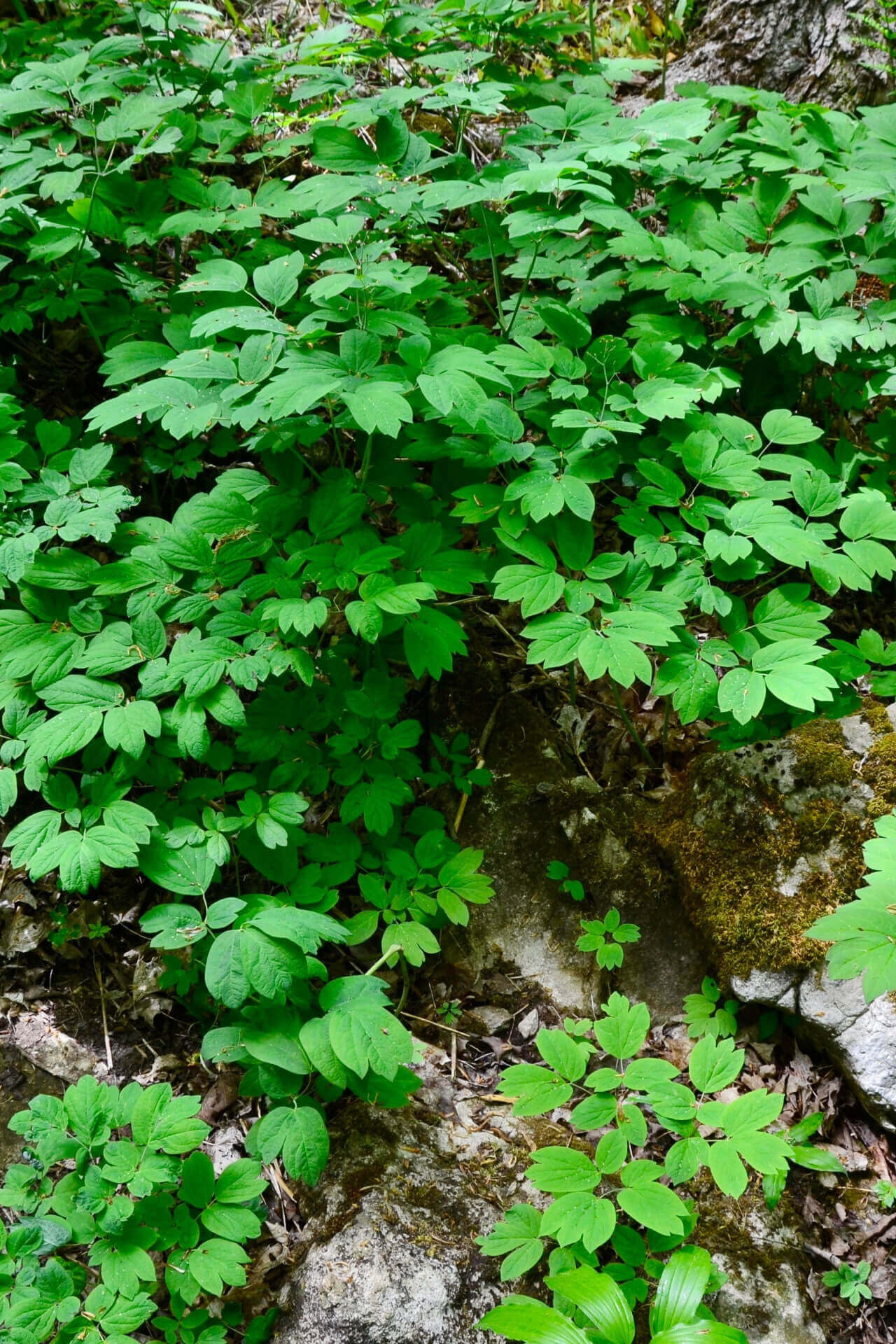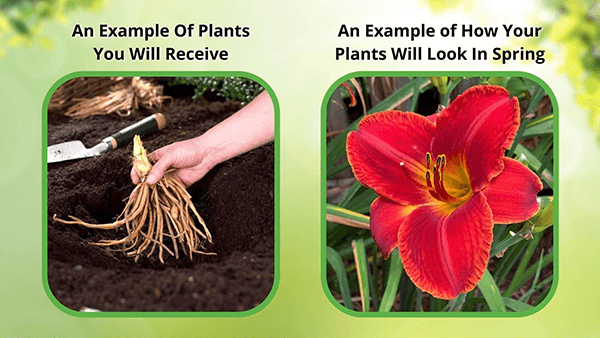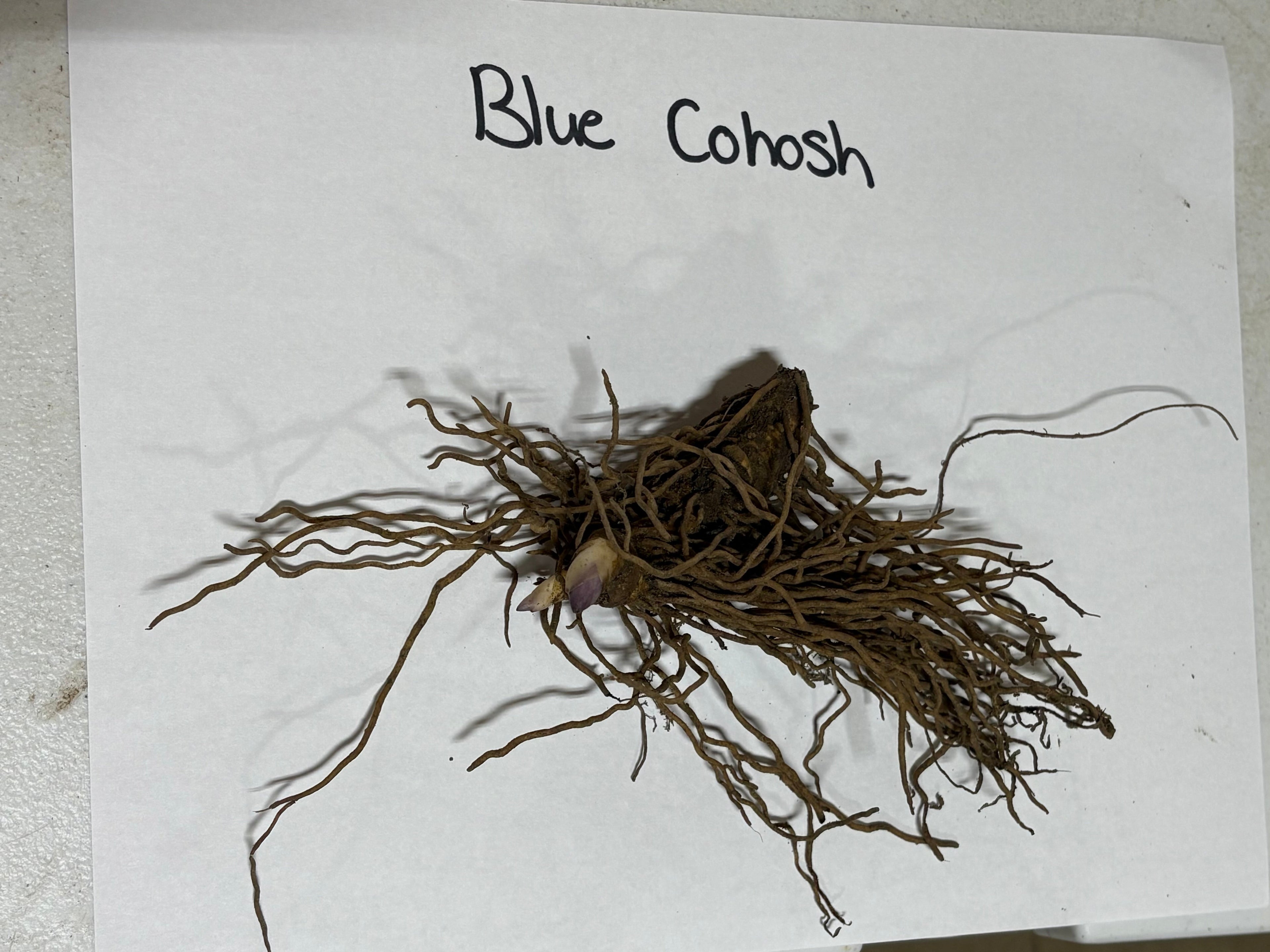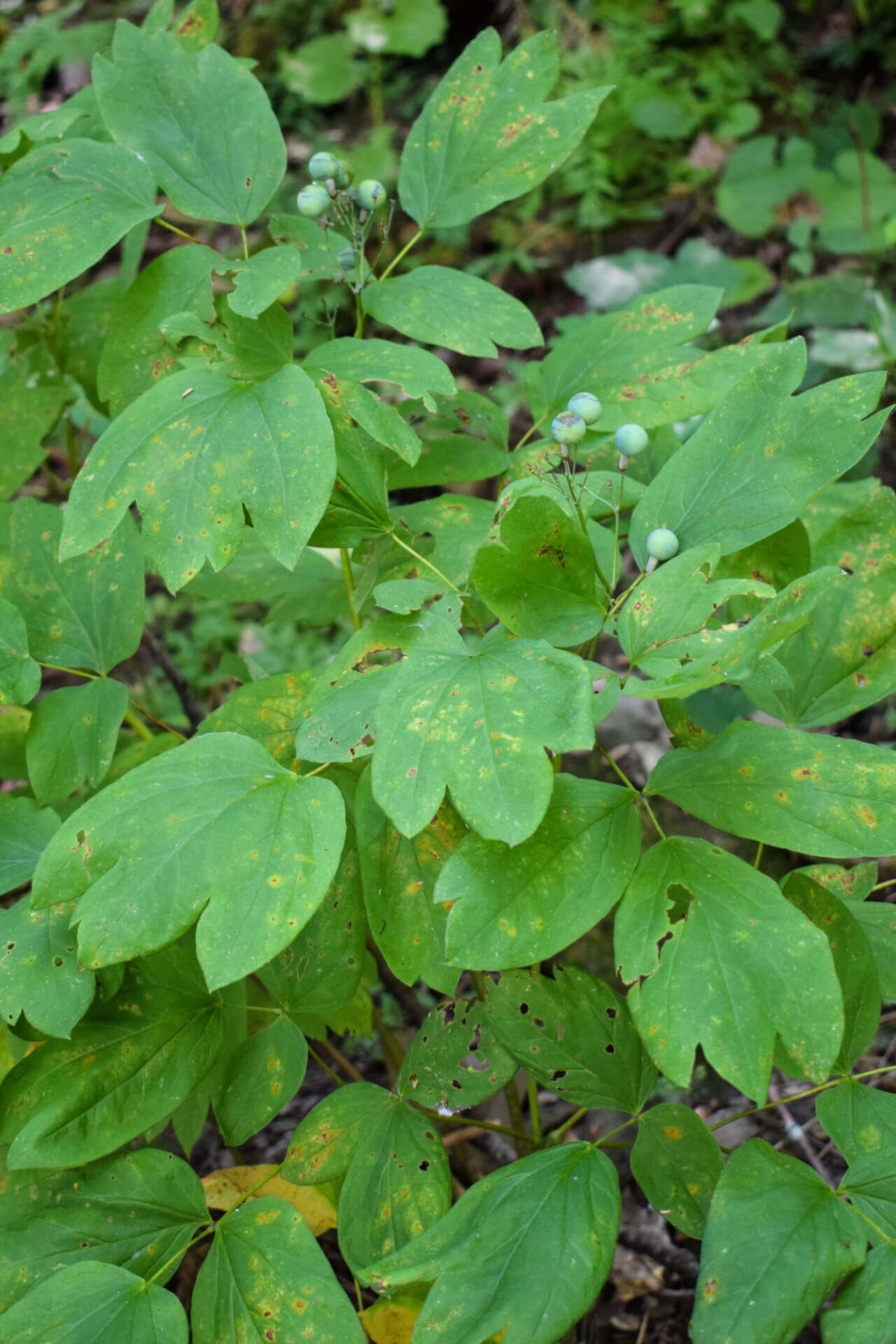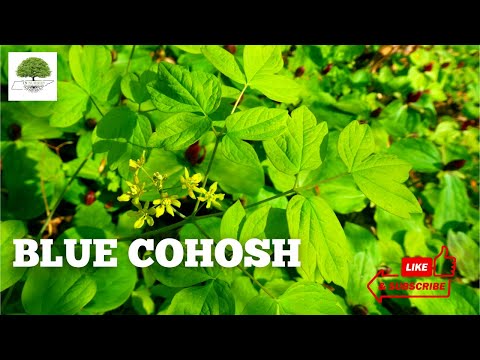Blue Cohosh For Sale
The Blue Cohosh is a perennial herb with blue-green foliage, whose small flowers dry out to become pea-sized, blue, edible berries. It thrives in deciduous woodlands, specifically in moist coves and hillsides.
The flowers and eventual berries are often overshadowed by the lush, plentiful foliage, which can fill out any area in your woodland garden. As a slow-growing perennial, it takes time to establish itself in any habitat, but then enjoys a long life in its quiet, undisturbed patch of earth.
Plant Details of Blue Cohosh
Family: Berberidaceae
Light Requirement: Shade, Partial Sun
Water Needs: Moderate - Semi-heavy
Height: 1-2 ft
Spread: 6 in-1 ft
Growth Rate: Slow
Soil Preference: Moist, Fertile, Loamy
Bloom Time: Spring
Flower Color: Dark purple
Wildlife Value: Attracts pollinators, Mice, and Caterpillars
Notable Characteristics: Blue Cohosh Plant
Blue Cohosh can be identified mainly by its stalks and leaves. A thin, single stalk grows erect from the ground, with equally thin branches growing off of it and branching into three leaves. The leaves vary in size, with round edges that come to a point at the end.
They are thin and silky, and their blue-green color is eye-catching in large patches. The six petals of the flower are a dark purple-brown with yellow stamens that bloom in the spring, but dry out and curl into themselves before falling off in the summer. Bright blue berries grow in their place, which add a beautiful, bold pop of color to the lush green leaves.
This plant is an important North American native because it is fully edible. The seeds can be a substitute for coffee, and the root is commonly used to treat pain from menstruation or even to return the reproductive cycle to a normal pattern. You can make the berries into a tincture to treat arthritis or other body aches and combine them with ginger, turmeric, or Solomon's seal to help your digestion.
Landscape Uses and Maintenance for Blue Cohosh
Blue Cohosh Plant is a resilient and long-lived plant that thrives among the oaks and maples in hardwood forests of the eastern United States. It grows especially well among other natives, making it a great addition to your native garden!
Blue Cohosh's nectar and pollen attract bees and other insects, while caterpillars love to make their homes on the lush foliage. Mice often enjoy eating the berries and help distribute the seeds through animal dispersal. The small flowers and berries often go unnoticed among the full leaves, but this steadfast plant is a beautiful, humble addition to any woodland area.
Exposure
Blue Cohosh thrives in partial to full shade, mirroring its natural woodland habitat. It prefers dappled sunlight under a canopy of trees, making it ideal for shaded garden areas with indirect or filtered light.
Height at Maturity
Over 12"
Usage
Shade Plant
Shipped As
Bare-root
Ships
Planting Zones
3-7
